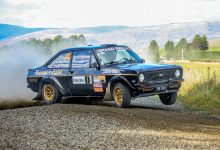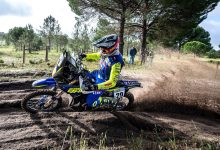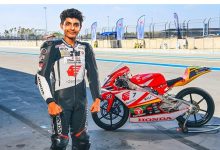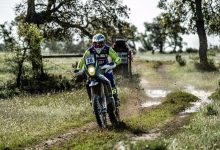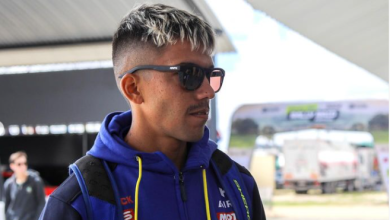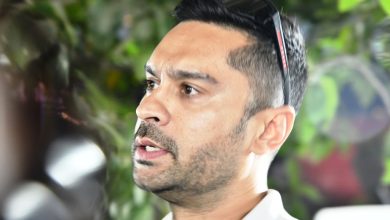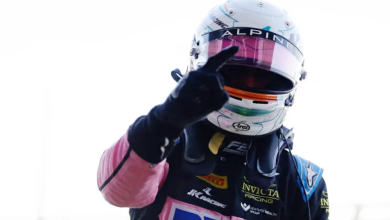2021 has ushered in a wave of enthusiasm and relief for the competitors and crews of the Dakar, who have complied with COVID-19 prevention measures along with the entire race environment. Over 2,400 PCR tests have been carried out to ensure the integrity of the “Dakar bubble” in which the rally caravan will remain isolated for almost two weeks. The competitors are now going through the technical and administrative scrutineering at King Abdullah Stadium in Jeddah. The whole process has been compressed and will end around lunchtime. The clock will start ticking in tomorrow’s 11 km prologue, which will provide an early snapshot of the pecking order and, most importantly, a rational starting order for the opening stage on 3 January.
ROMA À LA FRANÇAISE
The Bahrain Raid Xtreme team intended to strike the perfect balance between French and Spanish drivers by matching the Loeb-Elena duo with Nani Roma and Dani Oliveira. However, their plans were thwarted by the involuntary withdrawal of the co-driver of the two-time Dakar champion, who had to scramble for a back-up solution for the 2021 edition: “Dani tested positive on 9 December, so he was no longer supposed to be contagious at the time we were scheduled to leave for the rally. However, come 24 December he had yet to develop antibodies, which meant he was still potentially contagious and forced us to look for another co-driver.” An urgent headhunt began straight away to find the right person for the job: “The list of first-rate co-drivers isn’t that long, and they’d all been recruited by someone else. I asked Michel Périn and he was unwilling to commit on such short notice, but he told me Alexandre Winocq might be available.” The co-driver who had been taking part in the Dakar since 1999 had no bucket seat with his name on it for this edition, but he was nonetheless busy with some business a world away from the Saudi desert: “In my family activity, I work with horses, and we were bang in the middle of moving from Val d’Isère to Tignes“, explains the navigator who had already shaken up his schedule after his joint project with Guerlain Chicherit fell through. “When Nani called, my first thought was to say it was too late. But I’ve known him for quite a while. We were on the same team when we used to race in X-Raid’s ‘Zebra’ buggy with Guerlain, so I quickly changed my mind because it’s an amazing opportunity. Bahrain Raid Xtreme have done a sterling job in a short time. In turn, I also had to move fast to find an alternative solution, as I needed to find someone to take care of the horses. I couldn’t just pack my suitcase and hop onto the next flight!” Swift decisions and reactions —the bread and butter of a Dakar co-driver.
A NEW START FOR DE SOULTRAIT
The ugly scar on his right wrist is nothing more than a bad memory, a memento of the crash that truncated a stellar rise. Two years ago, Xavier De Soultrait crossed the finish line of the Dakar in seventh place overall with a stage win to his name. Then, after starting the last edition with the final podium in his sights, the biker from Moulins bowed out of the race in stage 4 after sustaining a cut affecting 80% of his radial nerve. De Soultrait’s mishap has made him more sensitive to the cold. “My physiotherapist and I worked really hard to fully regain the function of my hand, but I can’t deny that the cold makes me a bit more apprehensive now. I’ll have to wear thicker gloves in the morning.” If Adrien Van Beveren’s former teammate is willing to push so hard, it is also because he recently took a big weight off his shoulders with his transfer to Husqvarna. “I’m not the kind of person who likes to shake everything up, very much the opposite. However, this year I realised it could be a great move. I plucked up my courage, explained the situation to my sponsors and got them to follow me. This new scenario gives me a sense of fulfilment. I feel in my element and have got stronger.” Xavier De Soultrait is having a blast on his 450 Rally, especially with the Austrian race service keeping a close eye on him. “I won a race in Turkey this year and, although I wasn’t near the top in Andalusia due to a mistake on the second day, my pace was very good.” The biker from Moulins has no other goal in his eighth Dakar than to give it his best… without giving up on his dream of a podium place.
FEWER TYRES FOR A SAFER RACE
It is a question as old as motorbike racing itself: how can one go faster than the competition without being too reckless? Even the Dakar has to come up with an answer to this dilemma for the world of motor sports, as bikers seek to squeeze every last ounce of speed from their machines while organisers place the safety of the competitors at the heart of their concerns. Bikers, manufacturers, organisers, federations and other stakeholders came together in Lisbon in autumn to bridge the gap between these ambitions. “It has become obvious that motorbikes go too fast nowadays”, stresses David Castera, the director of the Dakar. “Today’s 450 cc single-cylinders are just as fast as the 800 cc twin-cylinders of the late 1980s, and they accelerate even faster to boot. There are two main approaches to boosting safety. Active safety is about improving the equipment used, for example, by requiring the use of airbags, whereas passive safety can be increased by capping the speed of the bikers and similar rules. Too many bikers want to ride as if it were a motocross race, but a rally raid is completely different. The focus is on endurance and stamina. This is why top bikers will not be allowed to use more than six rear tyres throughout the two weeks of racing. “Going full gas on stony terrain will no longer be an option for anyone who wants to win this race“, insists David Castera. “They will have to take care of their gear to make it to the finish.” Race official Jordi Pérez was in charge of marking the batch of six tyres for each of the competitors subject to the new rule. “36 bikers are affected, explains the Spaniard, who is serving as a technical scrutineering official. The tyres all have to be the same model and are branded with a red-hot iron. We also put a special sticker on them and paint them with a stroke of coloured reactive marker.” As abrasive as it is, even the Saudi sand should be unable to erase these markings.
